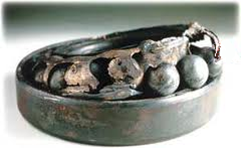More Causes of Bearing Failure
Posted May 27, 2015 by admin
The response to our recent post about bearing failure pointed out something we forgot to mention. That’s certainly not an exhaustive list of failure causes. In the interest of being thorough, we thought we would continue the list with a few more common causes of bearing failure and damage.
Vibration Brinell - Also known as false brinell, this is a situation where the balls are moving rapidly around the raceway even when idle. Without the bearing continuing to spin, lubrication will settle to the underside of the bearing and parts of the metal will wear down as the balls continue to spin.
Poor Lubrication - On the subject of lubrication, this chemical additive to the rotation process is crucial for maintaining the integrity of the bearing structure. With incorrect or improper lubrication, the balls can increase temperature and wear at the raceways.
Stress Fatigue - When a bearing takes on an excessive load from one side, the stress reversals on the interior ball bearings can create flexing of the metal. This flexing wears on the metal, puts in tension and compresses it. This metal will eventually begin to flake away as a result.
High Temperatures - Most premature bearing failure in the field is caused by excessive temperatures and conditions. High temperatures, be they atmospheric or due to excess friction, can cause the lubricant inside the bearing to boil and bleed reducing its effectiveness. Any oxidation that occurs in these conditions will deposit bits of carbon in the bearing that can cause blockage and failure. Even the metal itself can take damage from excessive heat. High temperatures are a big enemy of bearings overall.
A few other culprits have claimed their fair share of bearings including rust caused by dampness in storage and a failure to properly clean and maintain the bearing. The important part is the diagnostic process. Trust only the best and most careful team to quality test and maintain your bearings.
